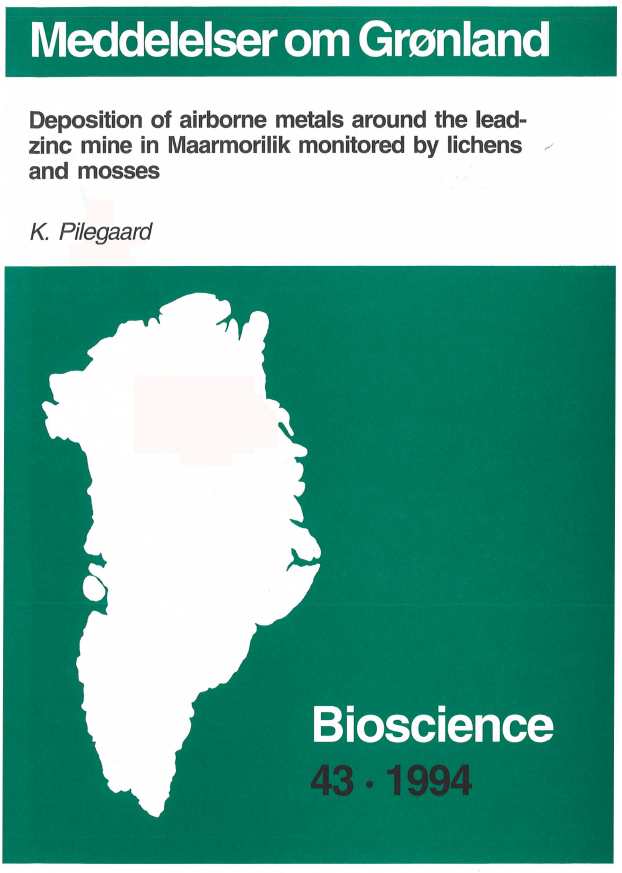Deposition of airborne metals around the lead-zinc mine in Maarmorilik monitored by lichens and mosses
DOI:
https://doi.org/10.7146/mogbiosci.v43.142581Abstract
The deposition of heavy metals around the Pb-Zn mine in Maarmorilik (Greenland) was monitored during the years 1979-1990 by analyses of concentrations in in situ lichens (Cetraria nivalis and Umbilicaria lyngei) and higher plants (Rhododendron lapponicum).
Concentrations of the metals Ag, As, Cd, Cu, Hg, Pb, Sb and Zn decreased with increasing distance from the mining and milling complex according to the model: y = axb + c where y = concentration, x = distance, c = background concentration, a and b = constants.
The spread was most pronounced west of Maarmorilik. Exposed Pb-Zn mineralizations in the area were found not to influence the overall deposition pattern. The transport of pollutants to higher altitudes was little.
Airborne pollution with Cd, Pb and Zn was monitored with suspended Sphagnum-bags during a period with ship-loading of concentrates and compared to a period without this activity. There was a strongly increased deposition of airborne Cd, Pb and Zn during periods of ship-loading. The primary sources of pollution were the concentrate conveyor and the ship-loader. Sphagnum-bags were also used to monitor the effects of remedial actions carried out in the mining town.
Analyses of the concentrations of Pb in Cetraria during the years 1979 to 1990 showed that pollution during the last years was only about half as large as during the early years.
This decrease is attributed to the pollution abatement carried out at the mining complex.

Downloads
Published
Issue
Section
License
Coypyright by the authors and the Commision for Scientific Research in Greenland / Danish Polar Center/Museum Tusculanum Press as indicated in the individual volumes. No parts of the publications may be reproduced in any form without the written permission by the copyright owners.

